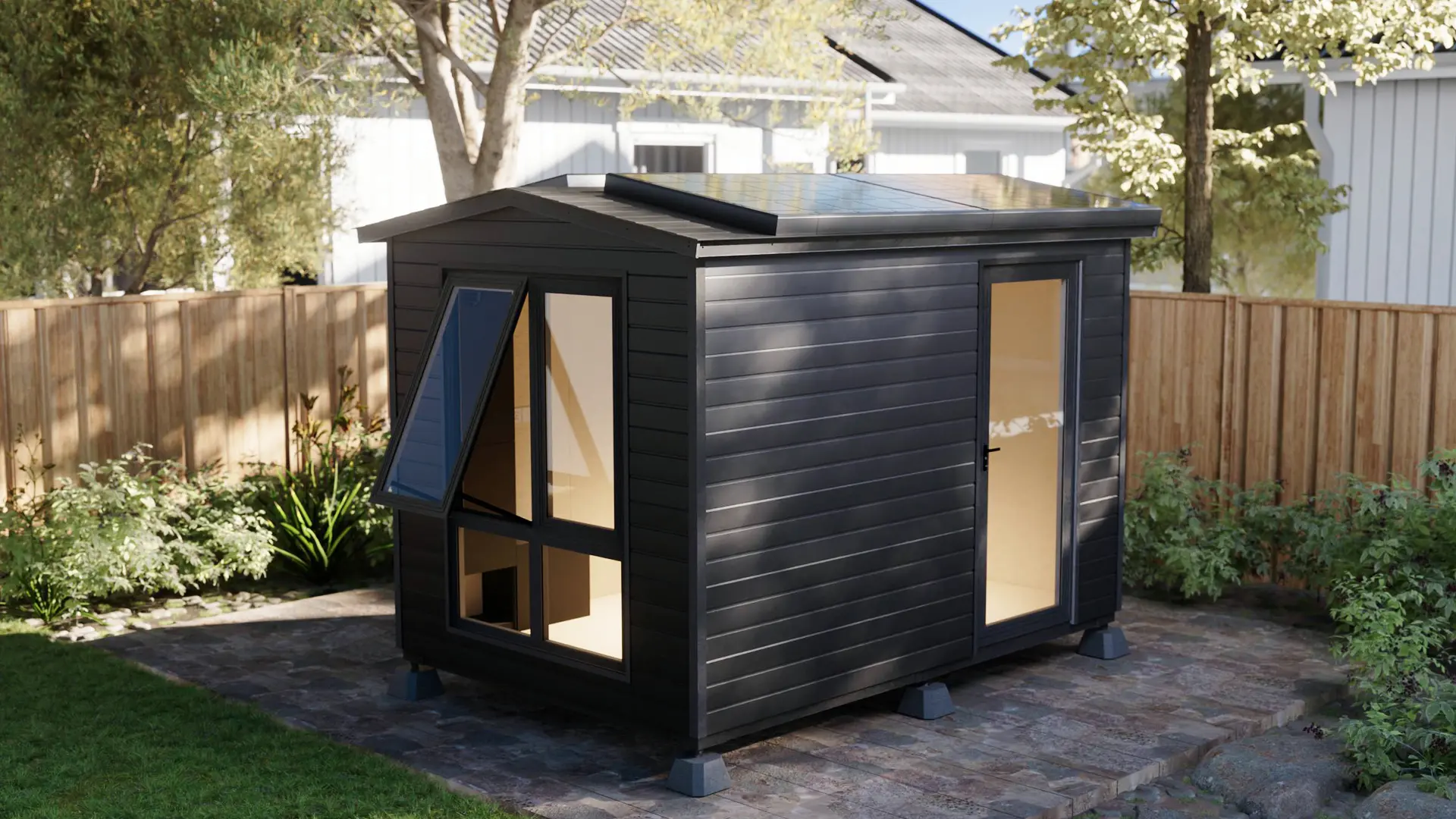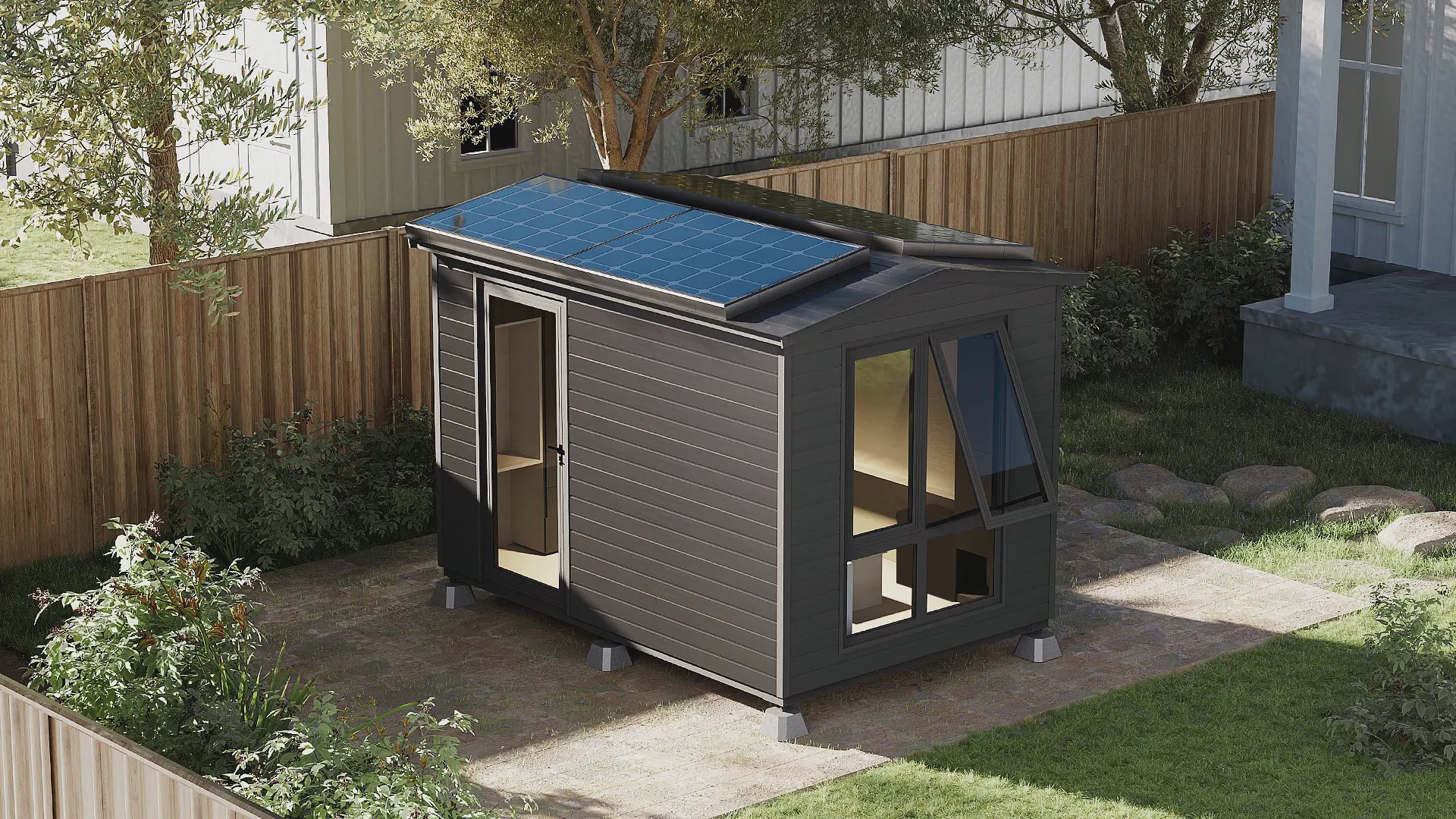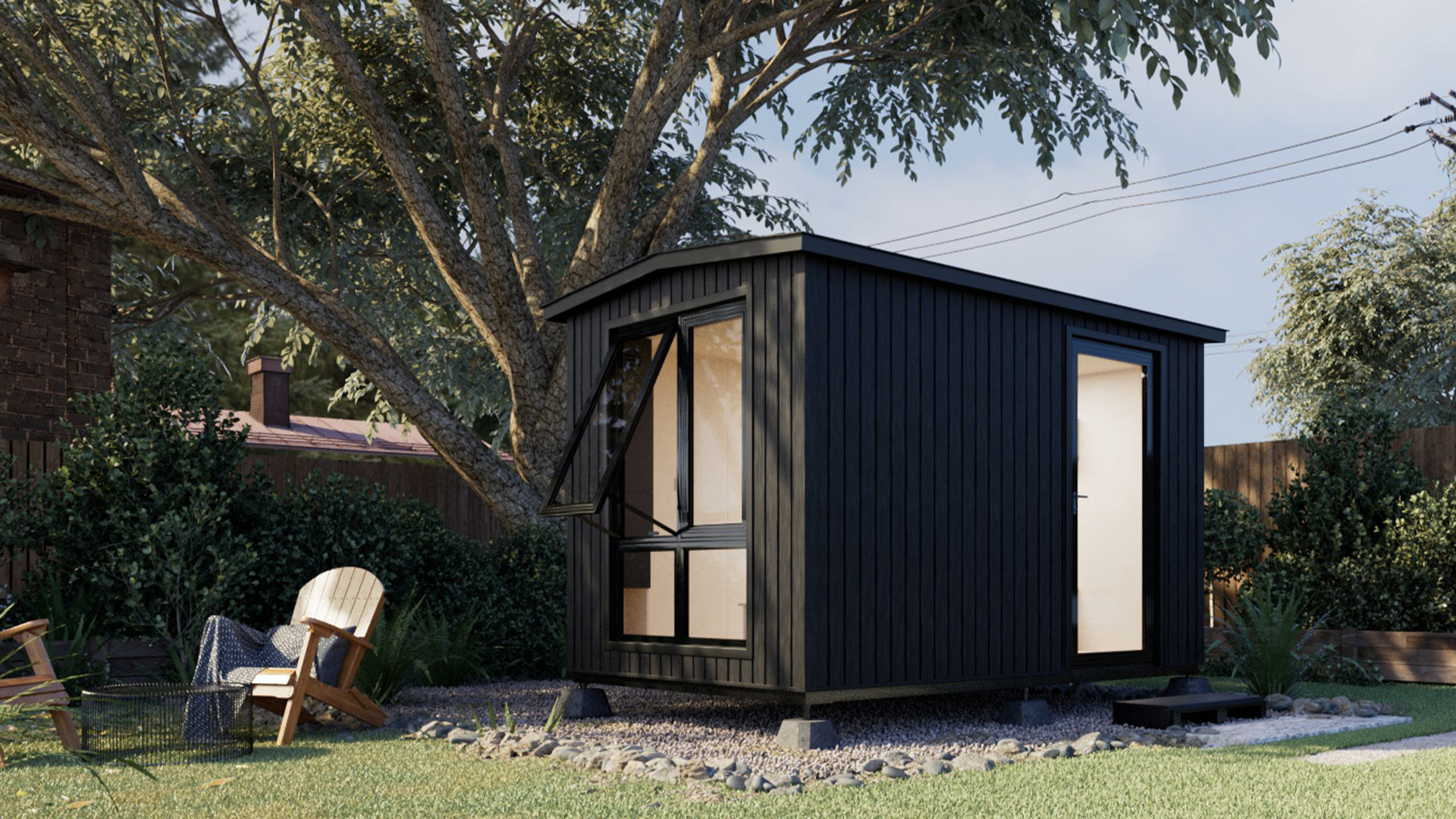
Understanding ADU Impact Fees in California
Table of Contents
- 1. What Are Impact Fees?
- 2. Why Are ADU Impact Fees Charged?
- 3. How Much Are ADU Impact Fees in California?
- 4. How Do ADU Impact Fees Affect the Development of ADUs in California?
- 5. What Is the Affordable Housing Impact Fee In California?
- 6. Are Prefab Homes in Los Angeles a Good Choice for Affordable Construction?
- 7. How Is a Prefab ADU Different From a Traditional One in California?
- 8. What Are Some Prefab Homes That I Can Buy In California?
- Conclusion
The adoption of ADU impact fees has become an urgent problem for homeowners and developers due to the changing housing situation in California. As the demand for alternative housing solutions continues to surge, concepts such as container homes in California and tiny home kits have garnered significant attention. Understanding the implications of the California ADU law in this context is crucial for navigating the complexities of ADU construction. Let's explore how these elements intertwine with ADU impact fees, shedding light on the challenges and opportunities they present for the housing market in California.
1. What Are Impact Fees?
Impact fees represent charges imposed by local governments or agencies on expansion projects within their jurisdiction. These fees fund local infrastructure, like schools, parks, and transportation. New buildings could impact that. The goal is to mitigate the impact of the expansion. In California, state policies restrict local taxes, so municipalities rely more on these fees. However, the California ADU law protects ADUs from high fees. Depending on your unit's size, you might not have to pay impact fees at all.
Both homeowners and investors need to understand these effect fees, especially since the California housing market is changing so quickly. As the need for cheap and environmentally friendly housing grows, it is important to understand the different aspects of these fees in order to complete building projects. This is especially true for new housing choices like container homes and tiny home kits. If you look more closely at the effect of fees and waivers, you can see how complicated ADU growth is in the state.
2. Why Are ADU Impact Fees Charged?
ADU impact fees are charged to ensure that new buildings pay their fair share of the costs of providing public services and infrastructure to the new residents. This is based on the principle that "growth pays for growth" which means that new development should not impose a financial burden on existing residents and taxpayers. By charging ADU impact fees, local governments can generate revenue to fund the expansion or improvement of public facilities and services that are needed to accommodate the growth in population and housing.
3. How Much Are ADU Impact Fees in California?
The amount of ADU impact fees in California varies based on the location, size, and kind of the ADU, as well as the process and criteria that local governments use to compute the costs. In 2020, the impact fee for accessory dwelling units in California ranged from zero dollars in some areas to sixty thousand dollars in others. The research also revealed that impact fees for accessory dwelling units (ADUs) were greater for detached ADUs than for attached or internal ADUs, and higher in coastal and metropolitan locations than in inland and rural areas.
As the state of California has just passed new rules to restrict and control ADU impact fees, the amount of these fees may alter in the near future. In 2020, the state legislature approved Assembly Bill 68 and Assembly Bill 881, which prevent local governments from imposing impact fees on accessory dwelling units that are smaller than 750 square feet, and place a cap on impact fees for units bigger than that at a rate that is proportionate to the size of the principal dwelling unit in California. In accordance with these statutes, municipalities must disclose both their fee structures and the methods used to arrive at those structures.
4. How Do ADU Impact Fees Affect the Development of ADUs in California?
Increases in the expense and difficulty of developing ADUs and the resulting disincentive for prospective developers to pursue ADU projects are two ways in which ADU impact fees may have a major effect on the growth of ADUs in California. Impact fees on accessory dwelling units (ADUs) can reach up to 17% of the entire cost of an ADU, lowering the financial return and viability of the project. Because they are not always clear, consistent, or predictable, the research concluded that ADU impact fees might cause ambiguity and confusion for developers.
However, if the state of California were to reduce or eliminate ADU impact fees, the construction of ADUs would likely grow as a result of the resulting reduced costs, greater appeal, and increased numbers of property owners who choose to construct such dwellings. The financial return and viability of an ADU project may be increased by up to 40% if impact fees are reduced to zero or a proportionate amount dependent on the size of the ADU. As a result, the research concluded that lowering ADU impact fees will help developers better predict the entire cost and schedule of an ADU project.
5. What Is the Affordable Housing Impact Fee In California?
The Affordable Housing Impact Fee in California is a one-time fee that local governments charge on new residential developments, including Accessory Dwelling Units (ADUs), to fund affordable housing programs. This fee helps offset the impact of new housing on the local housing market by generating revenue for low-income housing initiatives.
While state law aims to reduce fees for ADUs, some cities still impose ADU impact fees in California based on unit size and local regulations. Generally, ADUs under 750 square feet are exempt from impact fees, while larger ADUs may be subject to charges. Fees vary by municipality and can range from a few thousand dollars to over $10,000, depending on local ordinances.
For example, cities like Los Angeles and San Francisco have higher ADU impact fees due to high demand for affordable housing. On the other hand, some jurisdictions have waived or reduced fees to encourage ADU development.
Homeowners planning to build an ADU should check with their local planning department to determine whether affordable housing impact fees apply to their project. Understanding these fees early can help homeowners budget accordingly and explore cost-saving alternatives, such as prefab ADUs, which may qualify for exemptions or reduced fees.
6. Are Prefab Homes in Los Angeles a Good Choice for Affordable Construction?
Yes, prefab homes in Los Angeles are an excellent choice for affordable construction due to lower costs, faster build times, and reduced labor expenses. Prefabricated homes are built off-site in a controlled environment and then delivered and assembled on the homeowner’s property. This method significantly reduces material waste, minimizes construction delays, and lowers overall expenses compared to traditional on-site building.
In a city like Los Angeles, where housing costs are among the highest in the nation, prefab homes provide a cost-effective alternative for homeowners looking to build an ADU or a rental unit. Many prefab models are designed to comply with local ADU regulations, making them a practical choice for maximizing backyard space while keeping expenses within budget. If you're wondering how much it costs to build an ADU in Los Angeles, prefab options can significantly reduce the overall cost.
Another major advantage of prefab homes is their compliance with California’s sustainability standards. Many prefab units incorporate energy-efficient materials, solar compatibility, and modern insulation to meet state and local building codes. Homeowners also need to factor in utility connections, such as ADU sewer connections in Los Angeles, to ensure a smooth setup process.
For those considering different ADU options, a junior ADU in Los Angeles may be an alternative to a full-size prefab unit. Understanding Los Angeles County setback requirements is also essential to avoid zoning issues before construction.
Many companies specialize in prefab ADUs in Los Angeles, offering a variety of designs and features to suit different needs. Those taking advantage of SB9 in Los Angeles can use prefab models to maximize their lot's potential. If aesthetics are a priority, exploring ADU designs in Los Angeles can help homeowners choose a stylish, functional prefab home.
Additionally, homeowners looking for garage conversions can explore garage conversion ADUs in Los Angeles, which offer another cost-effective prefab solution. For those unfamiliar with the permit and zoning process, the ADU program in Los Angeles provides guidance on how to navigate local regulations.
For homeowners in Los Angeles looking for quick, affordable, and sustainable housing solutions, prefab homes are a smart investment that combines modern designs, energy efficiency, and compliance with local laws while significantly cutting down construction costs and build time.
7. How Is a Prefab ADU Different From a Traditional One in California?
A prefab ADU differs from a traditional ADU in California mainly in its construction process, cost, and installation timeline. While a traditional ADU is built on-site from the ground up, a prefabricated ADU is manufactured in a factory and then transported to the property for assembly.
One of the biggest advantages of prefab ADUs is speed. Since most of the construction takes place off-site, prefab ADUs can be installed in a matter of weeks, whereas traditional ADUs often take several months to over a year to complete due to permitting, labor shortages, and weather delays.
Cost is another major difference. Prefab ADUs are more affordable than traditional ones because they involve less manual labor, streamlined manufacturing, and bulk material purchasing. Additionally, many prefab models qualify for lower ADU impact fees in California, making them a more cost-effective choice for homeowners.
In terms of design and customization, traditional ADUs offer greater flexibility, while prefab ADUs come in pre-designed models with limited modifications. However, modern prefab ADUs now include high-quality finishes, smart home technology, and sustainable materials, making them an attractive alternative.
Overall, prefab ADUs are an ideal option for homeowners who prioritize affordability, speed, and efficiency, while traditional ADUs are better suited for those looking for fully customized designs.

8. What Are Some Prefab Homes That I Can Buy In California?
California offers a wide range of prefab homes designed to meet different budgets, space requirements, and zoning regulations. Whether you need a tiny prefab ADU for a backyard rental or a larger modular home, there are plenty of options to choose from.
WorkPod and WorkPod Versatile
For remote workers seeking a dedicated office space without the complexity of a full ADU, the WorkPod and WorkPod Versatile offer compact, prefab office solutions designed for productivity and privacy. These modern backyard office pods provide a soundproof, insulated environment that allows professionals to work without distractions while maintaining a seamless work-life balance.
Unlike traditional ADUs, WorkPods are designed specifically for office use, making them a great alternative for those who don’t need full residential features. They require minimal installation, comply with zoning regulations, and offer a cost-effective way to add a functional workspace to your property. If you’re considering an outdoor workspace, explore an outdoor office in California to see available options.
Studio Shed ADUs
For homeowners looking for a small, stylish, and versatile prefab home, Studio Shed ADUs provide an ideal solution. These compact backyard structures can function as guest houses, rental units, or creative studios, offering both modern design and practical use. Many Studio Shed models comply with California ADU laws, making them eligible for reduced ADU impact fees in California.
If you’re considering a prefab ADU in Southern California, Studio Sheds can offer a cost-effective and aesthetically appealing option. Different counties have unique regulations, so checking local ADU requirements is essential.
For ADUs in Long Beach, reviewing the ADU laws in Long Beach can help ensure compliance before installation. Similarly, if you're considering an ADU in Riverside County, checking the ADU regulations in Riverside County will clarify setback requirements and permit rules.
For those in San Bernardino County, understanding the ADU requirements in San Bernardino County can streamline the approval process. Whether you're building a home office, guest house, or rental unit, these Studio Shed ADUs provide a modern and efficient backyard living solution.

Tiny Home on Wheels
Some homeowners opt for mobile prefab homes, which offer flexibility and affordability. These units can be moved to different locations and may have fewer permitting restrictions than fixed ADUs.
Modular Prefab Homes
Larger prefab homes that come in multiple sections for assembly on-site. These are a great option for those wanting a full-sized, modern home with energy-efficient features.
Solar-Powered Prefab ADUs
With California’s focus on sustainable housing, many prefab manufacturers now offer solar-ready ADUs that reduce long-term utility costs.
Each of these prefab homes is designed to meet California's building regulations, making them an affordable and practical option for homeowners looking to expand their living space or invest in rental income.
.webp)
Conclusion
Understanding ADU impact fees in California is essential for anyone involved in ADU development. With the growing popularity of prefab homes in Los Angeles and California, staying informed about the latest regulations and strategies is key. By grasping the connection between ADU impact fees, affordable housing initiatives, and prefab ADUs, you can make informed decisions for successful housing projects in the state.
Stay connected with us!
Subscribe to our weekly updates to stay in the loop about our latest innovations and community news!
Interested in a Link Placement?
Spread the word
.svg)
.svg)






/https://storage.googleapis.com/s3-autonomous-upgrade-3/production/ecm/230914/bulk-order-sep-2023-720x1200-CTA-min.jpg)

/https://storage.googleapis.com/s3-autonomous-upgrade-3/production/ecm/230824/image_tMoN47-V_1692155358869_raw-93ed49d8-7424-464e-bdfe-20ab3586d993.jpg)